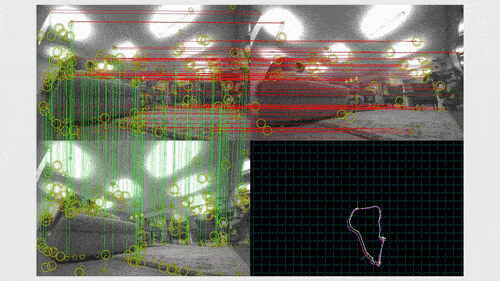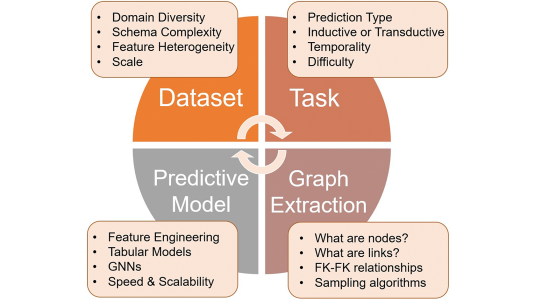When Amanda Prorok chose computer science as an elective in high school, its main appeal was that it was objectively evaluated — a solution either works or it doesn't. In retrospect, this teenage life hack proved fateful, paving a career path. Today, Prorok is pioneering practical solutions to hard coordination problems in multi robotics: the science of how robots interact.
Now professor of collective intelligence and robotics at the University of Cambridge, Prorok has published several papers on multi-robot systems. Her lab’s research project, “Learning Explicit Communication for Multi-Robot Path Planning”, earned her a 2019 Amazon Research Award.
The seeds for Prorok’s fascination with communication were sown in her infancy. Born in São Paulo to a Brazilian mother and English father, she grew up in a multilingual household. Her family moved to Switzerland when she was four, and she became fluent in Portuguese, English, German, and French. She was deeply influenced by both parents. From her mother, a psychologist, she gained a curiosity about human behavior and interaction, and from her father, an engineer, she learned how systems originated and functioned.
Moving from a primarily German-speaking school to a French-speaking one — the École Polytechnique Fédérale de Lausanne (EPFL) — Prorok found it challenging to suddenly adapt to advanced subjects like mathematics, physics, and computer science in a different language. She also found herself among a gender minority in her class of 200 men and 10 women.
“The system was competitive, hard, and industrial,” she remembered. “It was basically sink or swim.” She was determined to swim.
Discovering collective intelligence
In her fourth year of computer science at the EPFL, she learned about collective intelligence and swarm robotics.
“It was my first real introduction to how we observe complex natural systems,” she said. “This idea that we can reverse engineer nature is what I love and find so powerful.”
Prorok was especially inspired by Craig Reynolds’ Boids project, a “computer model of coordinated animal motion” that mimicked the flocking behavior of birds.
For her undergraduate project, Prorok tinkered with reverse engineering by exploring algorithms to predict individual and group behavior. She was intrigued by the question of why multiple intelligent agents worked in teams to serve a higher order goal and how their interactions could be optimized.
The result, she believed, was more than just the sum of individual parts. It was the “mysterious, emergent intelligence embedded in such interactions,” she recalled, that intrigued her.
But at the time, there seemed to be no future for her in computer science.
“It would have been utterly horrible to go into a company and do website programming. There was no creativity in there — no spark, no magic,” she said.
Japan: Collective intelligence in practice
An internship in Japan sparked the magic she had been seeking.
In her final year at EPFL, she was among four students who won an annual internship competition. Given her interest in robotics, she was matched with Mitsubishi Electric’s Advanced R&D Center in Amagasaki. There, she worked on automating robots that performed pick and place tasks in warehouses.
Living in Japan changed her world view. She was enthralled by the country’s cultural philosophies, particularly the spiritual beliefs about the interdependency between humans and their environment. She was also fascinated by how people in big cities such as Tokyo navigated crowded spaces, which led to her curiosity about how collective intelligence could be at play in crowd navigation.
“In Japan, you observe an enormous degree of collective intelligence,” she said. “There is no way you can live in a dense place such as Tokyo so efficiently, as Japanese people do, without it.”
Years later, when she set up her lab, the question fueled her research on robotics: How does one program a group of robots to move smoothly and as efficiently as possible while avoiding collisions and deadlocks?
Robotics and indoor localization
Prorok’s experience in Japan spurred her to return to computer science for her doctorate at EPFL.
Her thesis focused on indoor localization — how autonomous agents could locate themselves in indoor environments and determine their coordinates, as well as communicate with other agents when GPS signals were weak or absent.
She used mobile robots to emulate moving targets and tracked them in real time using a ground-truth positioning system. At the time, ultra wide-band (UWB) was an emerging technology that enabled devices to communicate and track precise locations. But UWB also had the disadvantage of complex signal processing and poor performance in cluttered environments due to signal reflections.
Prorok wanted to overcome the disadvantages of UWB and explore how robotic teams could not only help each other but also improve their self-knowledge. She eventually addressed the indoor localization problem with a hybrid approach using UWB localization and collaborative localization.
Her dissertation won the Asea Brown Boveri (ABB) prize for ‘best thesis’ in computer science at EPFL.
After graduation, Prorok joined Vijay Kumar in the General Robotics, Automation, Sensing and Perception Laboratory at the University of Pennsylvania to complete her postdoctoral degree. She was interested in researching how swarms of robots could collectively perform increasingly complex tasks.
She found that the key to a strong robot team is when each member has different but complementary capabilities and characteristics. Heterogenous robot swarms proved themselves more resilient to unexpected disturbances.
“Heterogeneity is an underexplored field of engineering, whereas in the social and natural sciences, it is relatively well studied,” she said. “Diversity is abundant in nature and the cornerstone of life and evolution. But what exactly must be different, and to what extent? How should teams communicate to leverage their complementarity?”
The Prorok Lab
At the University of Cambridge, which Prorok joined after her postdoctoral studies, she founded the Prorok Lab, where she and her team currently work on finding practical methods to solve problems that require robots to coordinate with each other.
This includes, for example, flocking or pathfinding through collective motion. Flocking refers to each robot in the group adjusting its velocity and aligning with other robots while maintaining a predetermined path and avoiding collisions.
The lab also works on distributed coverage, which entails sending robots into specific locations to gain familiarity with the layout of spaces, automate product delivery, monitor the environment, and conduct search and rescue for injured populations in disaster scenarios.
The 2019 Amazon Research Award recognized the lab’s work pioneering machine learning methods to synthesize local communication and decision-making policies. The award helped Prorok attract and retain top PhD students by funding their research and travel through stipends, and it provided credits for Amazon Web Services (AWS) to facilitate the machine learning components of the lab’s projects.
Prorok’s work has many potential applications in the real world. For example, one of her co-authored articles proposes a “plug and play” system that deploys connected sensors without requiring a global map, positioning data, or pre-calibration of the sensor network to guide a robot through a busy, cluttered, or dynamic environment. Prorok envisions using robots in remote parts of the world where connectivity is sparse or unavailable.
“I really like this idea of robots providing more sensing,” she said. “We need to be thinking about the benefits of instrumenting the world.”






